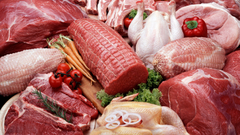Coursera is an online educational platform that partners with colleges and universities around the world to offer free courses across a wide variety of topics. I’ve taken a few classes and enjoyed them all: the lectures, quizzes, and projects have been well designed, and it’s obvious a lot of work has been put into them; and the flexibility of the weekly assignments makes it easy to fit the coursework into my schedule. I highly recommend checking out the list of courses being offered if online learning is your cup of tea.
Below are details about an upcoming course I am super excited about, and two others I have taken in the past that are relevant to Haute Pasture.
Gut Check: Exploring your Microbiome
Imagine if there were an organ in your body that weighed as much as your brain, that affected your health, your weight, and even your behavior. Wouldn’t you want to know more about it? There is such an organ — the collection of microbes in and on your body, your human microbiome.
From University of Colorado Boulder

About the Course
The human body harbors up to ten times as many microbial cells as human cells. What are these microbes and what are they doing? How can we study them to find out? What do they tell us about ourselves? Just as our human genome records traces of who we are and the conditions we have adapted to during evolutionary history, our microbial genomes may record traces of what we have eaten, where we have lived, and who we have been in contact with. The microbial ecosystems in different parts of our bodies, which differ radically from one another, also supply a wide range of functions that affect many aspects of human health.
Join us on a guided tour of the human gut and its microscopic inhabitants. We will first review what microbes are and how they get into our bodies. We will then discuss the methods we use to study microbial communities and briefly explore how gut microbiome data are analyzed. This information will provide us with a foundation to explore current microbiome research. We will cover topics such as the influence of the gut microbiota on our nutrition, health and behavior. Did you know that gut microbes may influence how sick we get or the way we feel? The course will culminate with an in-depth review of the American Gut Project, the world’s largest open-source, crowd-sourced science project, from how it works to what it’s taught us up until now.
This course starts October 6th and it should be fascinating!
The Meat We Eat
The Meat We Eat is a course designed to create a more informed consumer about the quality, safety, healthfulness and sustainability of muscle foods and address current issues in animal agriculture in developed and developing countries.
From University of Florida

About the Course
The average American is now at least three generations removed from production agriculture. This leads to the disconnection between how the public views agriculture and how scientists and producers view it, resulting in consumer distrust of science and commercial food production. It is this lack of trust which leads to consumer confusion and the urge to grasp at multiple solutions. However a growing number of consumers in developed countries are aspiring to “know where their food comes from”. Animal agriculture needs to explain the technology which will be used to sustainably feed 9 billion people by 2050.
Lectures will cover all aspects of muscle foods production, processing, preparation, cooking and storage. Additionally, the role of muscle foods in a balanced diet will be addressed as will issues which contribute to consumers limiting or eliminating meat from their diets.
I took this course in the summer of 2014. The final project for the course was a multimedia presentation on meat cookery; mine is here.
An Introduction to the U.S. Food System: Perspectives from Public Health
Explore how food intersects with public health and the environment as it moves from field to plate.
From Johns Hopkins Bloomberg School of Public Health

About the Course
A food system encompasses the activities, people and resources involved in getting food from field to plate. Along the way, it intersects with aspects of public health, equity and the environment. In this course, we will provide a brief introduction to the U.S. food system and how food production practices and what we choose to eat impacts the world in which we live. Through several case studies, we will discuss some key historical and political factors that have helped shape the current food system and consider alternative approaches from farm to fork. The course will be led by a team of faculty and staff from the Johns Hopkins Center for a Livable Future. Guest lecturers will include experts from a variety of disciplines, including public health and agriculture.
I took this course in early 2013, and wrote several posts (really just bulleted lists of my notes) about the course:
Week 1: Introduction to Food Systems, Equity and the Environment
Week 2: Food Systems, Food Security and Public Health
Week 3: Public Health and Environmental Implications of Industrial Models of Food Production











